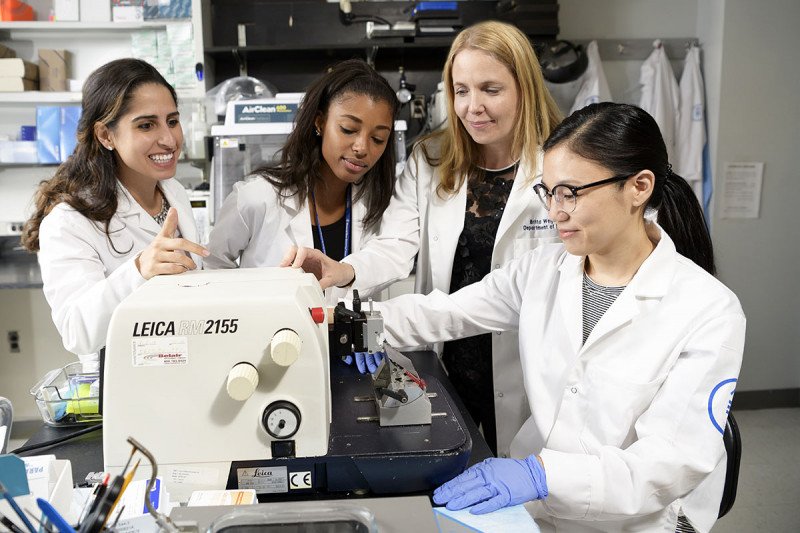
As research has revealed more about the genomics of cancer, it’s changed the way that doctors think about the disease. There is not a single type of breast tumor or colon tumor, for example, but many variations of each kind of cancer. The differences are in tumors’ appearance under a microscope, their molecular signatures, and distinct changes that drive their growth.
This variety is also found with ovarian tumors. There are many types, and not all behave or respond to treatment in the same way. For a rare ovarian tumor called sclerosing stromal tumor (SST), the situation is even more complicated. SST is not a cancer but a benign tumor that can be misdiagnosed as cancer.
“If a woman with SST is misdiagnosed as having ovarian cancer, she would likely be given more-aggressive treatments that she wouldn’t need,” says Britta Weigelt, a Memorial Sloan Kettering research scientist and senior author of a study published January 2 in Nature Communications. “Although these tumors can cause a lot of pain and other symptoms, they can be successfully treated with surgery alone because they do not spread.”
The Rarest of Rare Tumors
In the study, the investigators reported that they had identified a unique molecular change in SSTs. This allows for the accurate diagnosis of this tumor. They also say that some of the biological insights learned may be applicable to other kinds of tumors.
SSTs make up about 5% of an already rare type of ovarian tumor called sex cord-stromal tumor. Most of these tumors, which can also grow in the testes, are cancerous. Despite how uncommon SSTs are, the researchers from MSK and their colleagues at Massachusetts General Hospital in Boston, as well as collaborators from outside the United States, were able to obtain 26 samples that were confirmed to be this type of tumor. “This was, by a wide margin, the largest collection of these tumors ever studied with genetic approaches,” says Sarah Kim, the first author of the study and a fellow in Dr. Weigelt’s lab. “I completed four years of residency, and I never saw a single patient with it. There’s a lack of familiarity with SST in the medical community.”
Of Ovarian Tumors and Hedgehogs
The type of change that drives SST is called a fusion gene. Fusion genes occur when part of a chromosome breaks off and attaches to another part of a chromosome, linking two genes that are not normally linked. Fusion genes are found most commonly in pediatric tumors, especially sarcomas and blood cancers. Similarly, SST also affects younger women — usually in their 20s or 30s.
In SST, one of the genes involved in the fusion is called FHL2. The other gene is called GLI2. FHL2 is a gene that’s naturally expressed at high levels in ovarian tissue. When it fuses to GLI2, it drives the production of a tumor-causing protein.
In the Nature Communications study, 21 of the 26 samples tested had GLI2 fusion genes. The investigators reviewed data for more than 9,000 tumors in a large database and didn’t find any other instances of a FHL2-GLI2 fusion gene, confirming that this fusion is unique to SST.
Further research uncovered that the protein created from the fusion is involved in the Sonic hedgehog pathway. This signaling pathway is important for embryonic development. It has also been implicated in cancer, especially certain brain tumors and basal cell skin cancers. When the researchers tested drugs that target the Sonic hedgehog pathway in SST cell models in a dish, the cells responded, confirming that this pathway was driving cell growth.
“We started this project because SST is a clinical conundrum,” Dr. Kim says. “These findings will make things easier for both doctors and patients, by making it simpler to identify this rare tumor.”
“This study also provides new biological clues about Sonic hedgehog and its role in cancer,” Dr. Weigelt says. “We hope that it may help in the understanding of other tumors that pose diagnostic and clinical challenges.”





